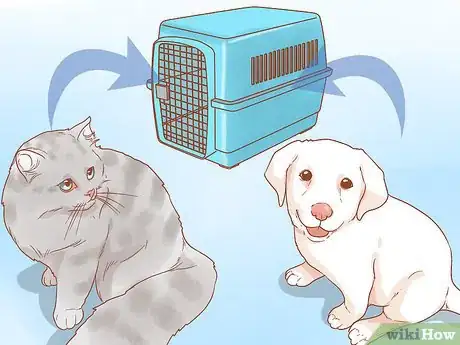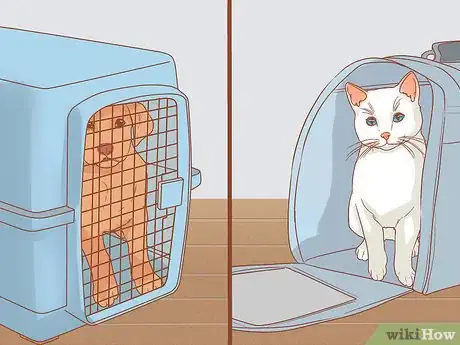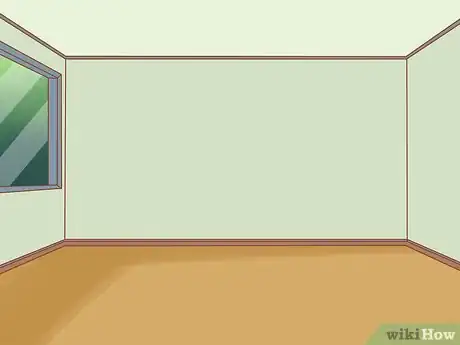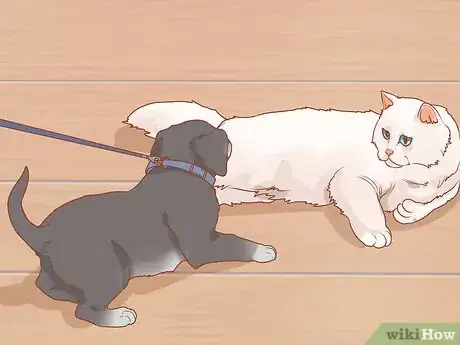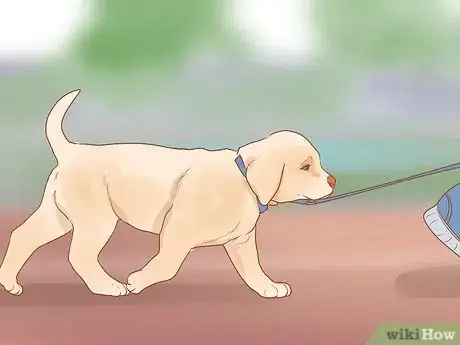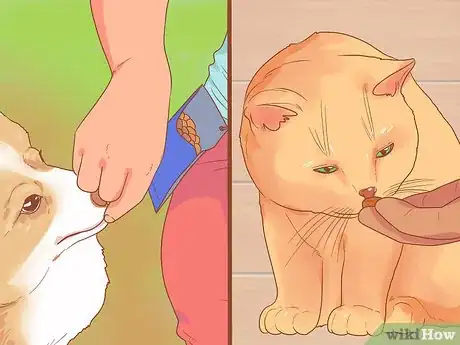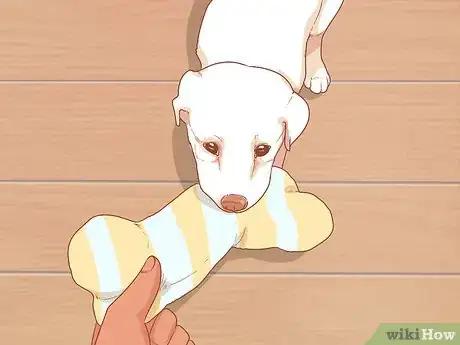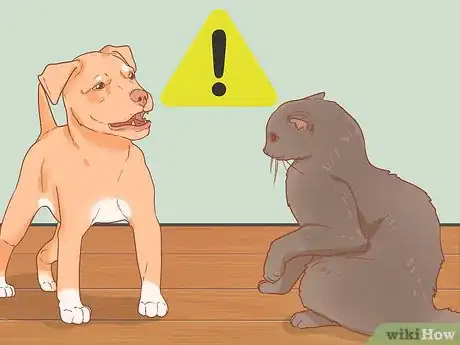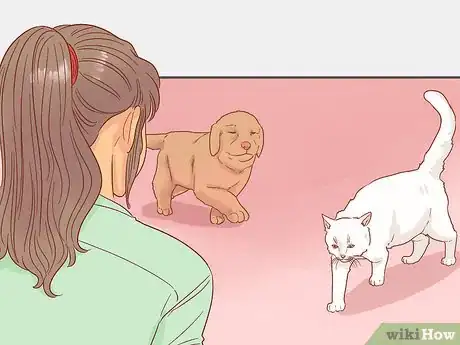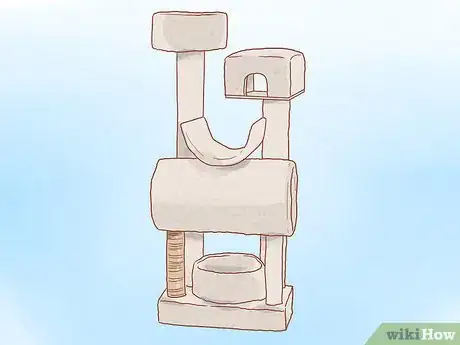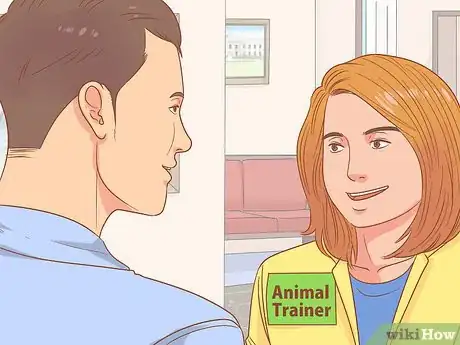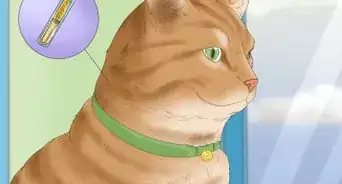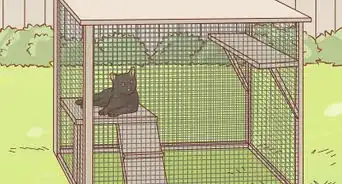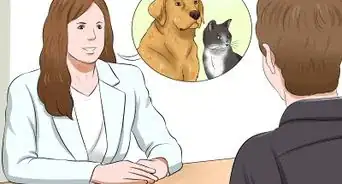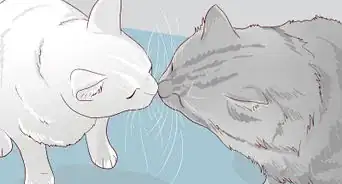This article was co-authored by Francine Miller. Francine Miller is an Applied Animal Behavior Counselor and Founder of Call Ms Behaving, a behavior counseling service for dogs and cats in San Diego, California. With over 16 years of experience, Francine specializes in treating behavior problems such as aggression, separation anxiety, phobias, fear reactions, destructiveness, urine marking, and compulsive behaviors. She uses a behavioral management and modification plan that is positive reinforcement only. She holds a Diploma in Canine Behavior Counseling from the American College of Applied Science (ACAS). Francine has completed all coursework toward an MS in Applied Animal Behavior Science and Family Counseling for Companion Animals from the American College of Applied Science (ACAS). She is a certified Associate of the International Association of Animal Behavior Consultants (IAABC) and a member of the Pet Professional Guild.
wikiHow marks an article as reader-approved once it receives enough positive feedback. In this case, 98% of readers who voted found the article helpful, earning it our reader-approved status.
This article has been viewed 363,386 times.
Introducing your new puppy to the existing cat is likely to be a stressful experience for both animals; however, if it is done correctly, both pets can be kept safe and reasonably calm while a positive relationship is formed. Make sure to separate the animals initially. Then, go for brief, leashed introductions. Only allow the animals to interact unsupervised when they are completely comfortable in one another's presence.
Steps
Separating the Animals
-
1Set up a space to confine your cat or dog. Both your puppy and your cat need a room in which they can adjust. You do not want to force a meeting right away. Give your pets separate care and attention for the first day or two.[1]
- You should usually confine the new pet initially, meaning you should keep your puppy in a separate room before letting her roam around the house.
- Make sure the room is stocked with adequate food, water, and toys. Make sure to spend plenty of time with your new puppy as she adjusts to your home.
-
2Alternate which animal is confined. You should switch out which animal is confined. This will give them each a chance to explore the home. They can also get used to one another's smells, and become increasingly comfortable with the fact a new animal is present.[2]
- Rotate the animals every few hours. It's important the puppy has a chance to leave the room and explore a little, but you should not allow her free-range of the house yet, as this may interfere with potty training. Expand the area in which the puppy is confined to two or three rooms and watch her closely to watch for signs of toileting.
- When the animals are not confined, they may interact through the door. Your dog may, for example, sniff or paw at the door. For the most part, this is safe; however, if your puppy is excessively pawing at the door, correct the behavior. This can cause stress for your cat, leading to a messy introduction.
Advertisement -
3Exchange scents. It's very important the dog and the cat get accustomed to one another's scent. You can swap small bits of bedding, like pillows or blankets. You can also exchange toys. Try rubbing a towel on one animal and putting the towel under the other animal's food dish.[3]
-
4Keep the animals confined while no one is home. You should never leave your pets unsupervised before you've made many successful face-to-face introductions. [4]
- Make sure both the dog and cat are securely confined to separate areas when no one is home.
- You may wish tocrate train your puppy and keep her safely confined while you are out, allowing the cat free range (as he is presumably already comfortable in the house)
- If you secure the cat in a room while you're gone, make sure he has access to a litter box.
Having an Initial Meeting
-
1Choose a good location for the first meeting. After a few days, you can introduce the animals. The introduction should take place in your home. With dogs, initial introductions are often made in a neutral location. Bringing a cat outside the home, however, can cause the cat stress.[5]
- Choose a room in your home to make the introduction. Make sure the room is large enough to comfortably keep both animals on opposite sides of the room initially.[6]
-
2Make an introduction with the puppy on a leash. This is best done after your puppy has tuckered herself out with play and exercise, as she will be less rambunctious around the cat. Whilst holding the leash, let the cat into the room. Allow the animals to look at one another.[7]
- You may notice some fear or aggression. If the animals are growling at one another, or if the cat bats at the puppy, you're moving too fast. Return to the separation phase for a few more days and try again.
- Have a favorite toy or treat to distract the puppy if she is showing too much interest in the cat.
- Do not let your puppy off the leash for the duration of the first meeting. You have to ease into unrestrained contact. An overeager puppy could easily injure a cat.
-
3Keep up with controlled, short meetings. Begin with short encounters and gradually build up. Remember to give each pet attention, affection and rewards for peacefulness.[8]
- Try your best to end meetings on a positive note. If neither animal is being aggressive, and they've been in the room together for a few minutes, this is a good place to end the meeting for the day.
- As time goes on, the cat should become more confident and the puppy should become disinterested in the cat.
-
4Continue with leashed interactions until the puppy is calm. How long this will take depends heavily on the temperament of both animals. Some dogs and cats will calm down quickly, while others will take more time to relax.[9]
- Your cat should be calm with the puppy in the room. He should eat, drink, and use the litter box without hesitance.
- Your puppy should be largely uninterested in the cat. She should mostly ignore the cat and pay attention to other stimuli.
- Once both animals are at this state, you can allow them to be in a room together without leashing the puppy.
Reinforcing Good Behavior
-
1Reward good behavior consistently. Many people are inclined to scold or punish a puppy for chasing or bothering a cat. This is actually counterproductive and could create a stressful situation, causing your puppy to become aggressive towards the cat. Instead of punishing negative behaviors, strive to reinforce your puppy's positive behaviors.
- Always reward your puppy for being calm and obedient around the cat. Offer treats and praise when your puppy ignores the cat in the room.
- Keep a small bag of treats on hand. Whenever your puppy displays good behavior, reward her.
-
2Distract the puppy if she becomes fixated on the cat. It's better to distract your puppy than punish her if she bothers the cat. If your puppy is chasing, watching, or otherwise bothering the cat, find a distraction to keep her occupied.[10]
- Use treats, a happy voice, or a toy to distract your dog when she seems to be bothering the cat.
- As soon as the dog leaves the cat alone, give her a treat as a reward.
-
3Be on the lookout for aggressive behaviors. You want to be very careful allowing your dog and cat to interact. Aggression can become an issue, and both animals can get hurt during a physical confrontation. If you notice signs of aggression, act promptly.[11]
- If a puppy is overly focused on the cat to the point she won't take her eyes off the cat, this is a sign of aggression. Growling, hissing, and swatting are signs of aggression in a cat.
- Make sure you get the animals away from each other if they're becoming aggressive. You do not want to deal with a fight.
-
4Do not allow unsupervised interactions for at least a month. Only once your animals are totally accustomed to one another should you ever leave them alone together. Always give each animal a means to find privacy. This could be a cat-door, doggie-door, high shelves or small recess so the animals can have their space. It will take at least a month for supervised interactions to be safe.[12]
- You may need longer than a month, depending on the temperament of your animals. Do not leave them alone unsupervised until they largely ignore one another.
Taking Safety Precautions
-
1Check with a vet to make sure both pets are healthy. A medical problem can stall or complicate the introduction process. Make sure to have a vet evaluate both your pets to make sure they're healthy before attempting an introduction.[13]
-
2Make sure your cat has places to hide. Cats need their space to be happy. When bringing a new puppy into the home, make sure your cat has a space to hide. Hostility may become more of an issue if your cat feels like he has no privacy.[14]
- Invest in something like a kitty condo. Your cat is likely to feel safe there.
- You should also make sure your cat has access to some perches in your home. Clear out a shelf on your bookshelf that your cat can use.
-
3Consider professional help. If the introduction does not go smoothly, hire an animal trainer. Some puppies or cats are more difficult to train than others. A qualified trainer can help you smooth over any behavioral problems.[15]
Expert Q&A
-
QuestionWill my cat get used to my new puppy?
 Francine MillerFrancine Miller is an Applied Animal Behavior Counselor and Founder of Call Ms Behaving, a behavior counseling service for dogs and cats in San Diego, California. With over 16 years of experience, Francine specializes in treating behavior problems such as aggression, separation anxiety, phobias, fear reactions, destructiveness, urine marking, and compulsive behaviors. She uses a behavioral management and modification plan that is positive reinforcement only. She holds a Diploma in Canine Behavior Counseling from the American College of Applied Science (ACAS). Francine has completed all coursework toward an MS in Applied Animal Behavior Science and Family Counseling for Companion Animals from the American College of Applied Science (ACAS). She is a certified Associate of the International Association of Animal Behavior Consultants (IAABC) and a member of the Pet Professional Guild.
Francine MillerFrancine Miller is an Applied Animal Behavior Counselor and Founder of Call Ms Behaving, a behavior counseling service for dogs and cats in San Diego, California. With over 16 years of experience, Francine specializes in treating behavior problems such as aggression, separation anxiety, phobias, fear reactions, destructiveness, urine marking, and compulsive behaviors. She uses a behavioral management and modification plan that is positive reinforcement only. She holds a Diploma in Canine Behavior Counseling from the American College of Applied Science (ACAS). Francine has completed all coursework toward an MS in Applied Animal Behavior Science and Family Counseling for Companion Animals from the American College of Applied Science (ACAS). She is a certified Associate of the International Association of Animal Behavior Consultants (IAABC) and a member of the Pet Professional Guild.
Certified Animal Behavior Counselor If you introduce them gradually, your cat should adjust eventually. Just keep in mind it's important for your cat to have a lot of hiding spots where the puppy can't reach, like perches and tunnels.
If you introduce them gradually, your cat should adjust eventually. Just keep in mind it's important for your cat to have a lot of hiding spots where the puppy can't reach, like perches and tunnels. -
QuestionHow can I train my puppy not to attack my cats?
 Community AnswerHold the puppy on a leash, give him treats when he is calm and obedient, and praise him when he stops attacking or barking at them.
Community AnswerHold the puppy on a leash, give him treats when he is calm and obedient, and praise him when he stops attacking or barking at them. -
QuestionCan milk be given to puppies?
 Community AnswerNever give a puppy or kitten cow or goat milk; always use special puppy or kitten milk.
Community AnswerNever give a puppy or kitten cow or goat milk; always use special puppy or kitten milk.
Warnings
- Never leave your pets alone together if there is any doubt in your mind that they are both ready⧼thumbs_response⧽
- There is always a chance your cat will not tolerate your puppy no matter how well you conduct introductions. Some dogs and cats are simply not a good match.⧼thumbs_response⧽
References
- ↑ https://www.paws.org/library/cats/home-life/introducing-cat-to-dog/
- ↑ http://www.americanhumane.org/animals/adoption-pet-care/dog-behavior/introducing-dogs-to-cats.html
- ↑ https://www.paws.org/library/cats/home-life/introducing-cat-to-dog/
- ↑ http://www.americanhumane.org/animals/adoption-pet-care/dog-behavior/introducing-dogs-to-cats.html
- ↑ http://www.americanhumane.org/animals/adoption-pet-care/dog-behavior/introducing-dogs-to-cats.html
- ↑ https://www.paws.org/library/cats/home-life/introducing-cat-to-dog/
- ↑ http://www.americanhumane.org/animals/adoption-pet-care/dog-behavior/introducing-dogs-to-cats.html
- ↑ https://www.bluecross.org.uk/pet-advice/introducing-dogs-and-cats
- ↑ http://www.americanhumane.org/animals/adoption-pet-care/dog-behavior/introducing-dogs-to-cats.html
- ↑ http://www.americanhumane.org/animals/adoption-pet-care/dog-behavior/introducing-dogs-to-cats.html
- ↑ http://www.americanhumane.org/animals/adoption-pet-care/dog-behavior/introducing-dogs-to-cats.html
- ↑ http://www.americanhumane.org/animals/adoption-pet-care/dog-behavior/introducing-dogs-to-cats.html
- ↑ https://www.paws.org/library/cats/home-life/introducing-cat-to-dog/
- ↑ https://www.paws.org/library/cats/home-life/introducing-cat-to-dog/
- ↑ http://bestfriends.org/resources/how-introduce-dog-cat
About This Article
To introduce a new puppy to the resident cat, start by rubbing a towel on one animal and putting it under the other animal’s food dish, and vice versa, so they can get used to the other's smell. Then, introduce the animals when your puppy is worn out from playing and keep it on a leash so that it can’t injure the cat. At first, keep them in the room together for a few minutes, then work your way up to longer sessions. If your puppy becomes fixated on your cat, or if your cat starts hissing or swatting at the puppy, separate them right away to keep them from fighting. For tips from our Veterinary reviewer on how to know when it’s all right to leave your pets together unsupervised, read on!

